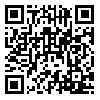

Volume 14, Issue 1 (11-2016)
RBS 2016, 14(1): 30-40 |
Back to browse issues page
Download citation:
BibTeX | RIS | EndNote | Medlars | ProCite | Reference Manager | RefWorks
Send citation to:



BibTeX | RIS | EndNote | Medlars | ProCite | Reference Manager | RefWorks
Send citation to:
ضيائي س س, زراني ف, موتابي ف, کارشکي ح, شهيدي ش. Psychometric Properties of the Persian Version of the Anticipatory Social Behaviours Questionnaire. RBS 2016; 14 (1) :30-40
URL: http://rbs.mui.ac.ir/article-1-446-en.html
URL: http://rbs.mui.ac.ir/article-1-446-en.html
1- استاديار، گروه روانشناسي سلامت، دانشکده علومتربيتي و روانشناسي، دانشگاه شهيد بهشتي تهران، تهران، ايران
2- استاديار، گروه روانشناسي باليني، دانشگاه شهيد بهشتي تهران، تهران، ايران
3- دانشيار، گروه روانشناسي، دانشکده علومتربيتي و روانشناسي، دانشگاه فردوسي مشهد، مشهد، ايران
4- دانشيار، گروه روانشناسي، دانشگاه شهيد بهشتي، تهران، ايران
2- استاديار، گروه روانشناسي باليني، دانشگاه شهيد بهشتي تهران، تهران، ايران
3- دانشيار، گروه روانشناسي، دانشکده علومتربيتي و روانشناسي، دانشگاه فردوسي مشهد، مشهد، ايران
4- دانشيار، گروه روانشناسي، دانشگاه شهيد بهشتي، تهران، ايران
Abstract: (4541 Views)
Aim and Background: The present study evaluated the psychometric properties of the Anticipatory Social Behaviours Questionnaires (ASBQ) (Hinrichsen & Clark, 2003) in a student sample. Methods and Materials : The participants of the present study consisted of 460 students (280 women, 180 men) who answered the ASBQ and 284 students (198 women, 86 men) who completed the ASBQ, Social phobia and anxiety inventory (SPAI), Subtle Avoidance Frequency Examination (SAFE), Social Phobia Inventory (SPIN), and Social Phobia Scale (SPS). In addition, 55 socially anxious patients also answered the ASBQ. The independent sample t-test, multivariate analysis of variance, Pearson correlation, Cronbach’s alpha, and confirmatory factor analysis (CFA) were used for data analysis. Findings: In the determination of criterion validity, the Pearson correlation coefficient of the ASBQ score with the scores of the mentions questionnaires was significant. The CFA replicated the two-factor solution for the 12-item ASBQ. Discriminant validity using independent t-test and multivariate analysis of variance illustrated a significant difference in the ASBQ score and its subscales between the two groups of with and without social anxiety. Furthermore, the internal consistency of the ASBQ, based on Cronbach’s alpha, was high and acceptable and its test-retest reliability was also approved. Conclusions Hence, it seems that the Persian version of the ASBQ was a reliable and valid instrument for assessment of anticipatory social behaviors in our Iranian student sample.
| Rights and permissions | |
 |
This work is licensed under a Creative Commons Attribution-NonCommercial 4.0 International License. |



